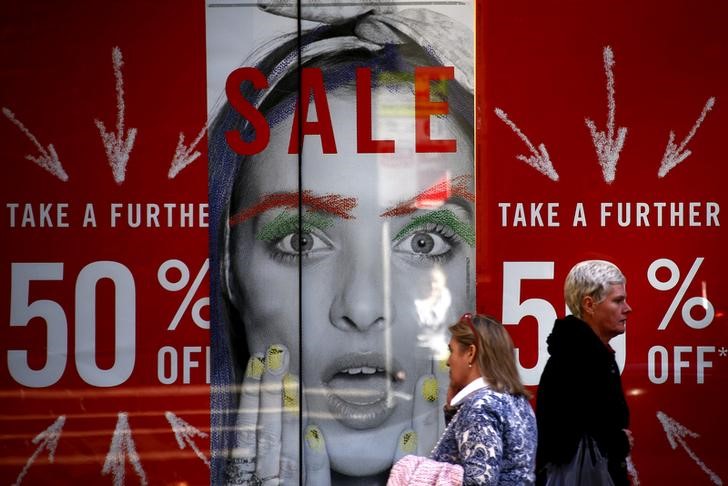By Ian Chua
SYDNEY (Reuters) - Australia's retail sales fell for the first time in over a year last month, a disappointing start to the third quarter that sent an already-wobbly Australian dollar down a quarter of a U.S. cent.
Thursday's data from the Australian Bureau of Statistics showed retail sales eased 0.1 percent in July from June when they surprised with a strong 0.6 percent jump.
The decline confounded the median forecast for a 0.4 percent rise and followed nearly 13 months of growth. Apart from a flat result in December and April, sales had been up every other month since June 2014.
Record-low interest rates and a booming housing market in Sydney and Melbourne have helped underpin household spending and offset anaemic wage growth. That in turn provided a key support for an economy that is weathering a downturn in the mining sector.
So a tentative sign that consumers may be starting to fatigue has raised worries for growth, particularly as gross domestic product (GDP) has cooled to its slowest in around two years in the June quarter.
"It puts us to a pretty soft start to the third quarter and compounds yesterday's GDP print, which although only slightly weaker than expected has been received pretty negatively by markets," said Tom Kennedy, economist at JPMorgan (NYSE:JPM).
Investors reacted to the data by driving the Australian dollar back to 70 U.S. cents <AUD=D4>, from around $0.7030, and towards a 6-1/2 year trough of $0.6982 set on Wednesday.
Interbank futures <0#YIB:>, which are already fully priced for a quarter-point cut in interest rates early next year, barely reacted.
The retail sales data overshadowed trade figures, which showed the trade deficit improved to A$2.46 billion in July, from a revised A$3.05 billion. This was due to a rebound in export values, while imports stayed relatively flat.

"The July trade figure represents a positive start to the September quarter. We expect net exports to swing back to being a positive for growth in Q3," Andrew Hanlan, economist at Westpac Bank wrote in a note to clients.
Analysts said the latest set of data probably won't move the Reserve bank of Australia (RBA) into cutting rates any time soon. Since the last cut in May, the RBA appeared content to sit back and watch how the economy unfolds.
On Tuesday, it left the cash rate steady at a record low 2.0 percent as widely expected. It still has what many economists describes as a soft easing bias.